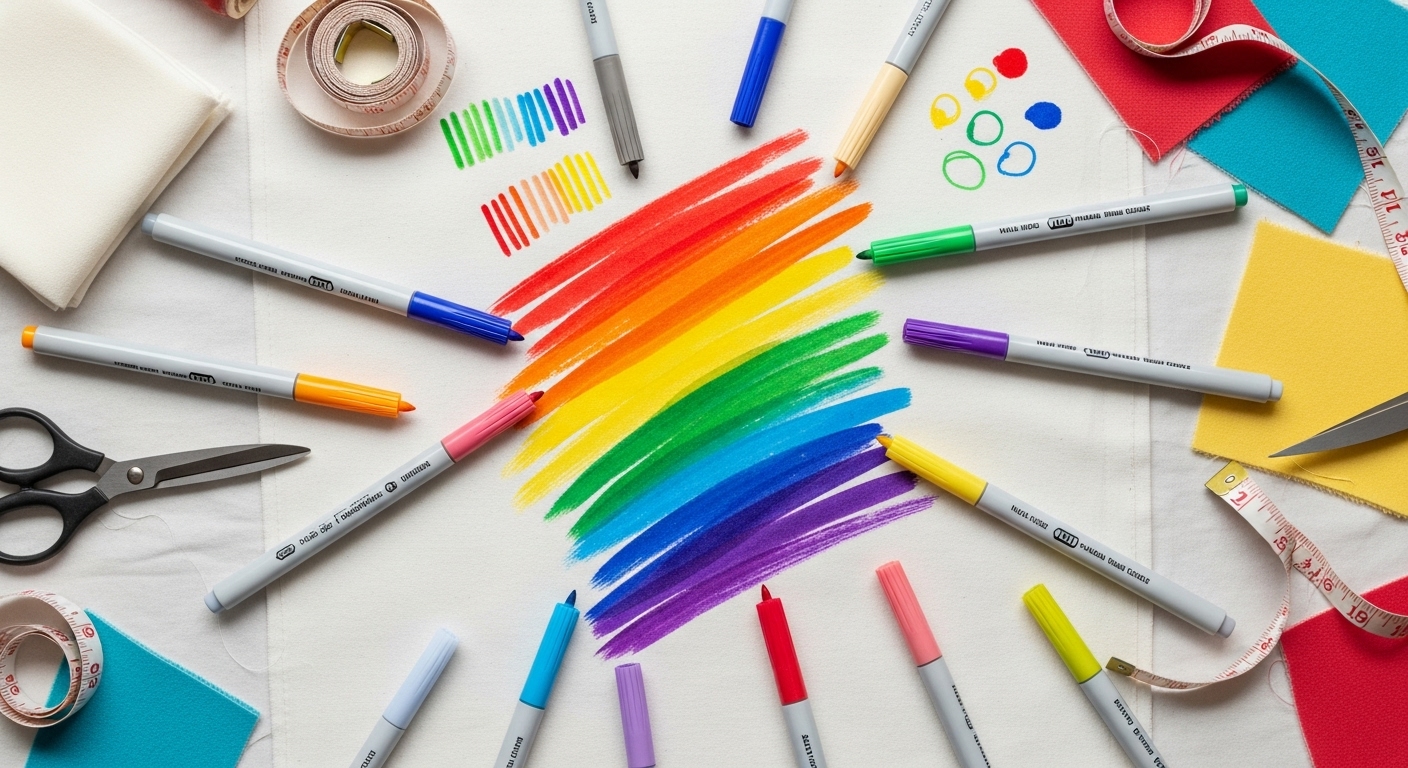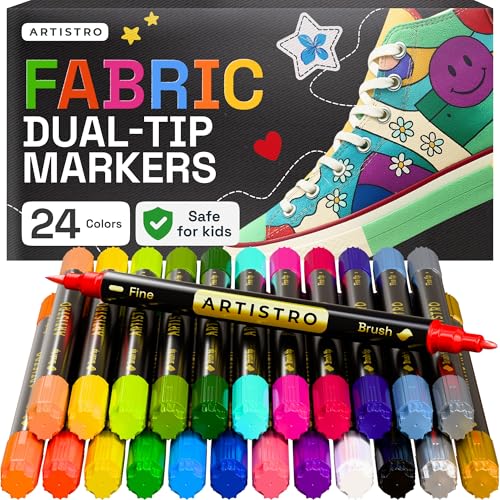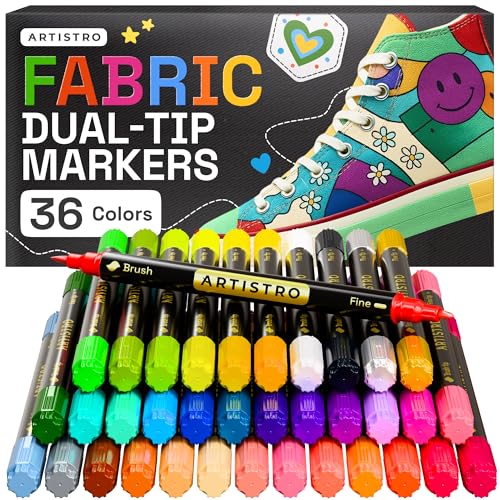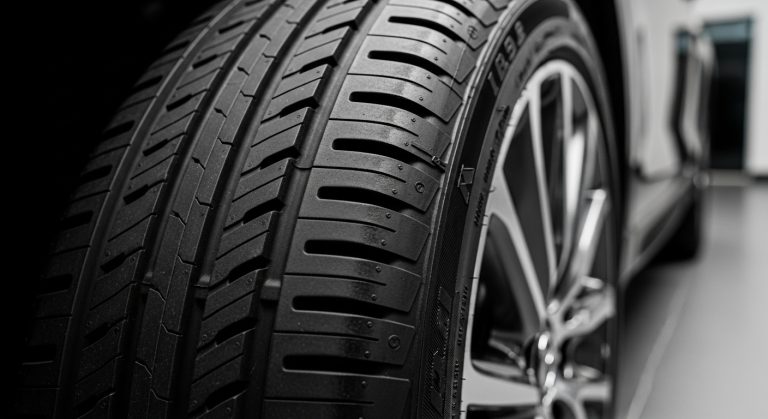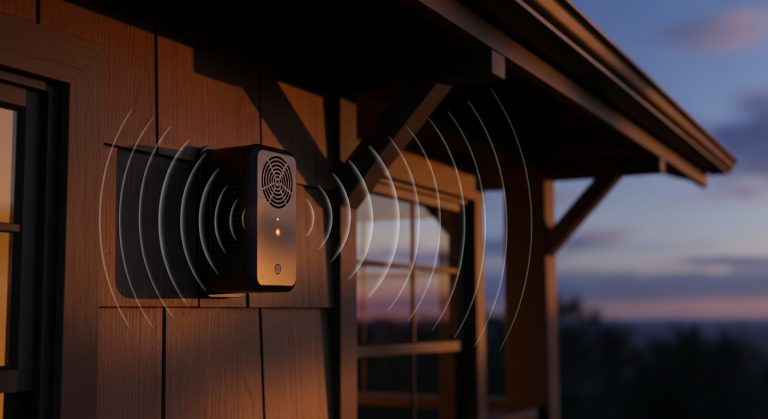Best Permanent Markers for Fabric: Ultimate Guide 2026
Tired of fabric designs that fade after the first wash? The secret to creating permanent, vibrant artwork lies in choosing the right markers and mastering proper application techniques.
Top-performing permanent fabric markers like Tulip Fabric Markers, Pentel Gel Roller, and Arteza dual-tip options deliver exceptional wash resistance when properly heat-set. These professional-grade tools bond chemically with fabric fibers, creating designs that maintain their brilliance through countless wash cycles.
This ultimate guide reveals the game-changing techniques that separate amateur attempts from professional-quality results.
You’ll discover which brands truly deliver on their permanence promises, master heat-setting methods that lock in color forever, and learn insider tips for achieving flawless application on any fabric type. Stop settling for disappointing results and start creating masterpieces that last.
Key Takeaways
- Permanence depends on ink formulation and heat-setting – The best fabric markers use specialized pigments that bond chemically with fabric fibers, and many require proper heat-setting through ironing or tumble drying to achieve maximum durability.
- Brand selection matters significantly – Top-rated brands like Tulip, Pentel, and Arteza consistently deliver superior performance with vibrant colors and wash resistance, while each offers unique features for different project needs.
- Tip size determines project versatility – Fine-tip markers excel at detailed work and precise lettering, while broad-tip markers efficiently cover large areas, and dual-tip options provide maximum flexibility for various applications.
- Fabric compatibility affects results – Natural fibers like cotton accept markers best, synthetic fabrics may need specialized products, and blended materials require testing to ensure optimal performance and permanence.
- Proper application techniques ensure professional results – Surface preparation, steady pressure, consistent speed, and adequate drying time between layers create even coverage and prevent bleeding or streaking.
- Heat-setting is crucial for longevity – Following manufacturer instructions for heat-setting through ironing or dryer methods transforms washable designs into truly permanent artwork that withstands multiple wash cycles.
- Proper care extends design life – Using cool water, mild detergents, gentle drying methods, and protecting from UV exposure maintains marker vibrancy and prevents premature fading or cracking over time.
What Makes a Fabric Marker Truly Permanent?
Permanence in fabric markers depends on several crucial factors that determine whether your designs will last or fade after the first wash. Understanding these elements helps you make informed choices for your projects.
The ink formulation plays the most critical role in permanence. High-quality fabric markers use specialized pigments that bond chemically with fabric fibers. These pigments penetrate deep into the material rather than sitting on the surface.
Heat-setting requirements vary significantly between brands. Some markers become permanent without any additional treatment, while others need heat activation through ironing or tumble drying to achieve maximum durability.
Key Permanence Factors
Fabric compatibility determines how well markers perform on different materials. Cotton, polyester, and blended fabrics each interact differently with marker inks, affecting both color vibrancy and longevity.
Wash resistance separates truly permanent markers from temporary alternatives. The best markers maintain their color intensity and sharpness even after multiple wash cycles in hot water with strong detergents.
UV stability ensures your designs won’t fade when exposed to sunlight. Premium fabric markers include UV-resistant compounds that protect against color degradation from prolonged sun exposure.
Top-Rated Permanent Fabric Marker Brands
The fabric marker market offers numerous options, but certain brands consistently deliver superior performance and reliability. These manufacturers have earned their reputation through extensive testing and user satisfaction.
Tulip Fabric Markers stand out for their exceptional permanence and vibrant color selection. Their paint-based formula creates an opaque finish that works beautifully on both light and dark fabrics without requiring heat setting.
Pentel Gel Roller for Fabric excels in precision applications. The smooth gel ink flows effortlessly across fabric surfaces, creating clean lines without skipping or bleeding. This marker particularly shines for detailed work and fabric labeling.
Premium Brand Features
Arteza Fabric Paint Markers offer dual-tip versatility with both fine and extra-fine points. Their waterproof formula resists fading and maintains color integrity through repeated washing cycles.
Sharpie Stained provides bold, fluorescent colors that create eye-catching designs. While initially bright, these markers fade to more subtle tones after washing, creating a unique vintage effect that many crafters appreciate.
Marvy Uchida Fabric Markers feature hard nibs perfect for filling larger areas and creating solid color blocks. Their consistent ink flow ensures even coverage without streaking or patchiness.
Fine-Tip vs Broad-Tip: Choosing the Right Style
Tip size dramatically affects your marker’s versatility and the types of projects you can tackle successfully. Understanding the strengths of each style helps you select the perfect tool for your specific needs.
Fine-tip markers excel at detailed work, precise lettering, and intricate designs. They’re ideal for signing quilts, adding small decorative elements, or creating delicate patterns that require accuracy and control.
The narrow tip allows for exceptional precision but may require multiple passes to achieve full color saturation. This makes them perfect for outlining and adding fine details to larger designs.
Broad-Tip Advantages
Broad-tip markers cover large areas quickly and efficiently. They’re perfect for filling in shapes, creating bold lettering, or adding solid color blocks to your fabric projects.
The wider tip delivers more ink per stroke, resulting in vibrant, saturated colors with fewer passes. This efficiency makes them ideal for time-sensitive projects or when working with larger design elements.
Dual-tip markers combine both fine and broad points in a single tool. This versatility eliminates the need to switch between different markers, streamlining your workflow and reducing costs.
Application Techniques for Best Results
Proper application techniques significantly impact the final appearance and durability of your fabric designs. Following proven methods ensures professional-looking results that withstand regular use and washing.
Surface preparation begins with clean, dry fabric free from sizing, fabric softeners, or other treatments that might interfere with ink adhesion. Pre-washing new fabrics removes these potential barriers.
Steady pressure and consistent speed create even lines and uniform color distribution. Rushing the application often results in streaky or uneven coverage that detracts from your design’s overall quality.
Professional Application Tips
Test patches on fabric scraps help you understand how different markers behave on your specific material. This practice prevents disappointing surprises on your finished project.
Layering techniques build color intensity gradually. Multiple light passes often produce better results than attempting to achieve full saturation in a single heavy application.
Drying time between layers prevents colors from bleeding together unintentionally. Allow each layer to set completely before adding additional elements or colors to your design.
Fabric Types and Marker Compatibility
Different fabric compositions interact uniquely with permanent markers, affecting both color appearance and longevity. Understanding these relationships helps you choose the right markers for your specific materials.
Natural fibers like cotton and linen generally accept fabric markers well. Their absorbent nature allows inks to penetrate deeply, creating strong bonds that resist washing and wear.
Synthetic fabrics such as polyester and nylon present different challenges. Their smooth, less absorbent surfaces may require specialized markers or additional heat-setting to achieve permanent results.
Material-Specific Considerations
Blended fabrics combine characteristics of both natural and synthetic fibers. The marker’s performance depends on the blend ratio and which fiber type dominates the fabric’s composition.
Textured fabrics like canvas or denim may require markers with firmer tips to penetrate the weave effectively. Soft-tipped markers might struggle to deliver consistent coverage on these rougher surfaces.
Stretch fabrics need markers with flexible bonds that won’t crack or flake when the material is stretched. Look for markers specifically designed to maintain their integrity on elastic materials.
Heat-Setting and Permanence Methods
Heat-setting transforms many fabric markers from washable to truly permanent. This crucial step activates chemical bonds between the ink and fabric fibers, creating lasting durability.
Iron heat-setting remains the most common and effective method. Place a clean cloth over your design and apply medium heat for 30-60 seconds, ensuring even coverage across all marked areas.
Dryer heat-setting offers an alternative for items that can’t be easily ironed. Tumble dry on medium heat for a full cycle, allowing the sustained heat to activate the permanent bonding process.
Heat-Setting Best Practices
Temperature control prevents damage to both your fabric and design. Different materials require specific heat levels, so always check fabric care labels before applying heat.
Timing precision ensures complete activation without overheating. Too little heat won’t activate the permanence, while excessive heat might damage delicate fabrics or cause colors to fade.
Protection layers prevent ink transfer to your iron or other garments. Always use parchment paper or clean cotton cloth as a barrier during the heat-setting process.
Common Mistakes to Avoid
Inadequate testing leads to disappointing results on finished projects. Always test markers on fabric scraps first to understand their behavior and permanence characteristics.
Rushing the process often results in uneven coverage, bleeding, or poor permanence. Take time to apply markers properly and allow adequate drying between steps.
Ignoring fabric preparation compromises marker adhesion and longevity. Clean, properly prepared fabric provides the best foundation for permanent, vibrant designs.
Prevention Strategies
Overloading with ink causes bleeding and muddy colors. Build up color gradually with multiple light applications rather than trying to achieve full saturation immediately.
Mixing incompatible products can lead to unexpected reactions or poor results. Stick with markers from the same brand or thoroughly test combinations before use.
Skipping heat-setting when required results in designs that wash out completely. Follow manufacturer instructions carefully to ensure permanent results.
Care and Maintenance of Marked Fabrics
Proper care extends the life of your fabric marker designs and maintains their vibrant appearance through countless uses. Following specific guidelines protects your creative investment.
Washing temperature affects marker permanence significantly. Use cool to warm water rather than hot temperatures, which can cause even permanent markers to fade or bleed over time.
Detergent selection impacts color retention. Mild, color-safe detergents preserve marker vibrancy better than harsh formulations containing bleach or strong enzymes.
Long-Term Preservation
Drying methods influence design longevity. Air drying or low-heat tumble drying prevents the thermal stress that can cause marker inks to crack or fade prematurely.
Storage considerations protect marked fabrics from UV damage and environmental factors. Store finished items away from direct sunlight and in clean, dry conditions.
Handling frequency affects wear patterns on marked areas. Minimize excessive rubbing or stretching of decorated sections to maintain design integrity over time.
Creative Project Ideas
Personalized clothing transforms ordinary garments into unique fashion statements. Add names, designs, or decorative elements to t-shirts, jeans, and accessories for custom style.
Home décor projects bring personality to living spaces. Create custom pillowcases, table runners, or wall hangings that reflect your personal aesthetic and color preferences.
Gift customization adds thoughtful touches to presents. Personalize tote bags, aprons, or fabric items with names, dates, or special messages for memorable gifts.
Advanced Techniques
Layered designs create depth and visual interest. Combine different colors and techniques to build complex patterns that showcase your artistic skills and creativity.
Mixed media approaches incorporate fabric markers with other crafting materials. Combine with fabric paints, embroidery, or appliqué for rich, textured results.
Template usage ensures consistent results across multiple items. Create or purchase stencils for professional-looking lettering and repeated design elements.
Frequently Asked Questions
Do fabric markers work on all types of fabric?
Most permanent fabric markers work best on natural fibers like cotton and linen. Synthetic fabrics may require special markers or additional heat-setting for optimal results.
Blended fabrics generally accept markers well, though performance varies based on fiber ratios. Always test on a small area first to ensure compatibility and desired results.
How long do fabric marker designs last?
High-quality permanent markers can last years with proper care and heat-setting. The longevity depends on fabric type, washing frequency, and care methods used.
Proper heat-setting significantly extends design life. Without heat-setting, even “permanent” markers may fade after several wash cycles, especially in hot water.
Can I use regular permanent markers on fabric?
Regular permanent markers aren’t designed for fabric applications and may not withstand washing. They often crack, fade, or bleed when exposed to water and detergents.
Fabric-specific markers contain specialized formulations that bond with textile fibers. These provide superior permanence and flexibility compared to standard permanent markers.
What’s the difference between fabric markers and fabric paint?
Fabric markers offer precision and convenience for detailed work and fine lines. They’re ideal for lettering, outlining, and intricate designs requiring accuracy.
Fabric paint provides better coverage for large areas and creates a thicker, more opaque finish. It’s perfect for bold designs and solid color blocks.
Do I need to heat-set all fabric markers?
Heat-setting requirements vary by brand and marker type. Some markers become permanent without heat, while others require thermal activation for maximum durability.
Always check manufacturer instructions for specific heat-setting requirements. When in doubt, heat-setting generally improves permanence and color retention.
Transform Your Fabric Projects Today
Permanent fabric markers open endless possibilities for creative expression and practical applications. From personalizing clothing to creating unique home décor, the right markers transform ordinary fabrics into extraordinary pieces.
The key lies in choosing quality markers suited to your specific needs and fabric types. Whether you prefer fine-tip precision or broad-tip coverage, proper application and care ensure your designs remain vibrant and beautiful for years to come.
Don’t let another project pass by with disappointing results. Invest in professional-grade fabric markers and discover the satisfaction of creating permanent, beautiful designs that truly last.

